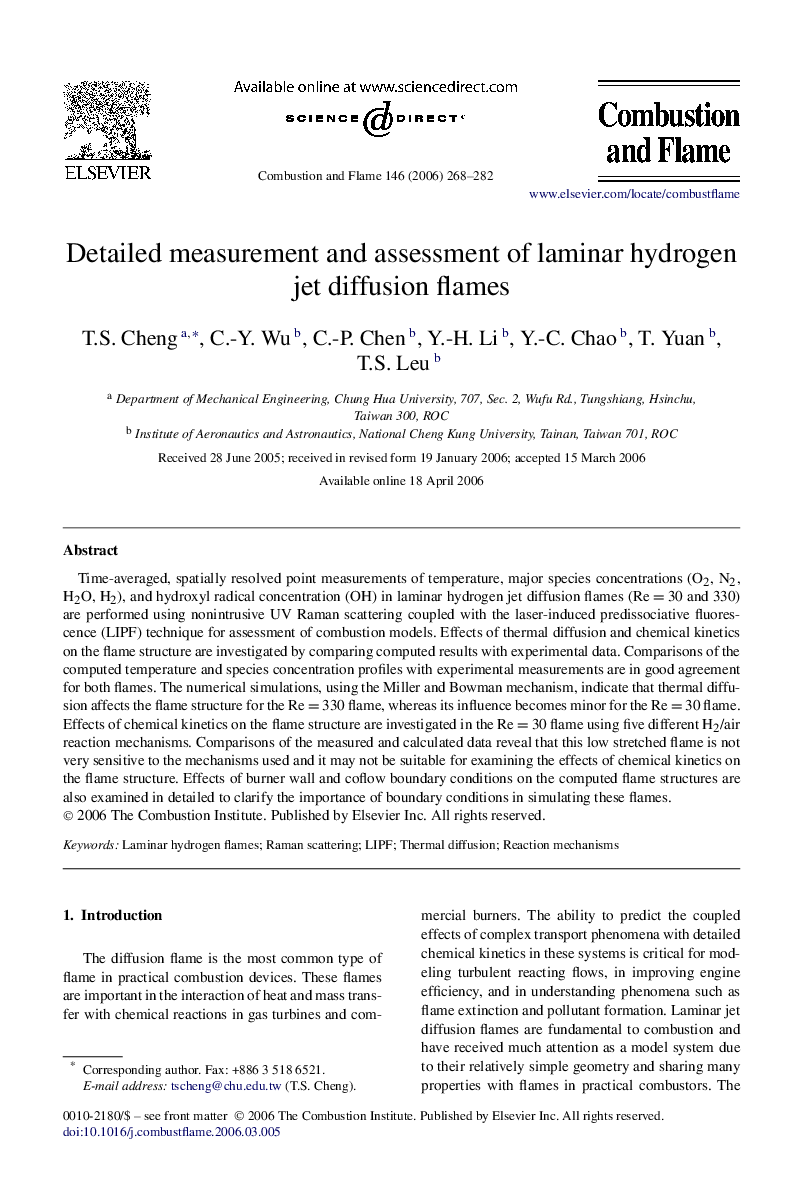| Article ID | Journal | Published Year | Pages | File Type |
|---|---|---|---|---|
| 169918 | Combustion and Flame | 2006 | 15 Pages |
Time-averaged, spatially resolved point measurements of temperature, major species concentrations (O2, N2, H2O, H2), and hydroxyl radical concentration (OH) in laminar hydrogen jet diffusion flames (Re=30Re=30 and 330) are performed using nonintrusive UV Raman scattering coupled with the laser-induced predissociative fluorescence (LIPF) technique for assessment of combustion models. Effects of thermal diffusion and chemical kinetics on the flame structure are investigated by comparing computed results with experimental data. Comparisons of the computed temperature and species concentration profiles with experimental measurements are in good agreement for both flames. The numerical simulations, using the Miller and Bowman mechanism, indicate that thermal diffusion affects the flame structure for the Re=330Re=330 flame, whereas its influence becomes minor for the Re=30Re=30 flame. Effects of chemical kinetics on the flame structure are investigated in the Re=30Re=30 flame using five different H2/air reaction mechanisms. Comparisons of the measured and calculated data reveal that this low stretched flame is not very sensitive to the mechanisms used and it may not be suitable for examining the effects of chemical kinetics on the flame structure. Effects of burner wall and coflow boundary conditions on the computed flame structures are also examined in detailed to clarify the importance of boundary conditions in simulating these flames.
